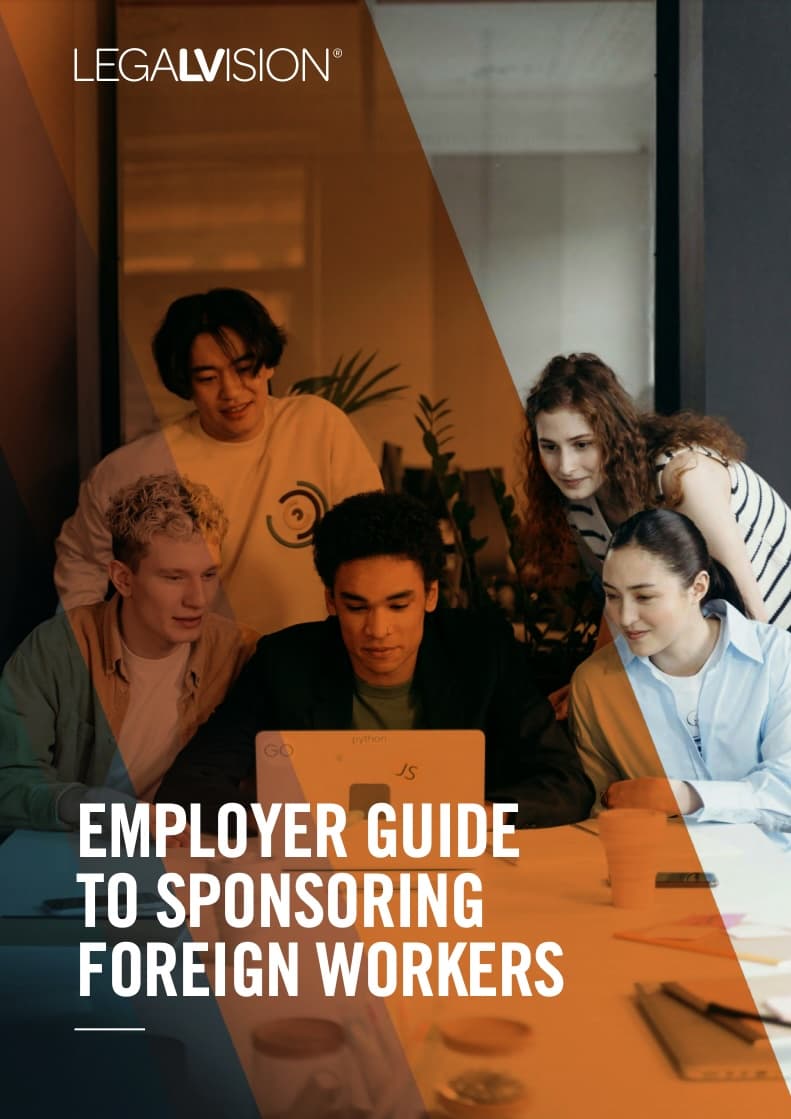Australia is a hotspot for international students because of its high-quality education, diverse and inclusive culture, and excellent work and lifestyle opportunities. International students in Australia can work part-time while studying and full-time during semester breaks, which can help them gain significant work experience while financially supporting themselves. In addition, after completing their studies, international students have various post-study visa options. These options provide an excellent opportunity for international students to gain valuable work experience and potentially transition to permanent residency. However, some international students may be eligible for quicker and more direct pathways to permanent residence. This article will explore options from a student visa to permanent residency.
As borders reopen post-COVID-19, the return of international students to Australia is a crucial factor in driving economic growth. According to the most recent migration system report, international students play a significant role in Australia’s economy, contributing billions of dollars annually. The report also acknowledges the significance of attracting and retaining highly skilled students and providing a pathway to permanent residency.
Direct Pathways
Skilled Independent Visa (subclass 189) (Points-tested stream)
Subclass 189 is a points-based visa that allows skilled workers to live and work in Australia as permanent residents. Applicants are assessed based on several factors, such as:
- age;
- work experience;
- educational qualifications;
- English; and
- suitable skills.
As a student visa holder, you can approach the process in two ways.
1. EOI Before Course Completion
You may lodge an EOI before completing your course or program. However, if you do so, you cannot claim points for the Australian study requirement and the specialist education qualification (and regional study if you are in regional Australia). Nevertheless, you can still claim points for your English language ability, existing educational qualifications and skilled employment experience.
2. EOI After Course Completion
Alternatively, you may lodge an EOI after completing your course or program. Considering the case study above, Taylor will now have 90 points as he can claim points for the Australian study requirement. However, remember that you must first be invited to apply for subclass 189. If you wait until the completion of your Australian degree, be mindful that you will most likely only have two months (60 days) after being invited to lodge the subsequent 189 visa before your current student visa expires. If you have not received an invitation and your student visa is close to expiring, you may want to explore other temporary visa options first.
Skilled Nominated Visa (subclass 190)
Subclass 190 is similar to subclass 189, with the addition of state nomination. This visa also requires you to submit an EOI where you will be able to claim state nomination points. You may be required to satisfy additional state nomination requirements, such as active residence in the relevant state or employment in the nominated occupation.
In the above case study, if Taylor receives a nomination from NSW, he can claim a total of 90 points (95 with the Australian study requirement). Subclass 190 is recommended for skilled applicants who want to increase their chances of getting an invitation and are interested in contributing to their state’s local economy and addressing skill shortages in their regions.
Employer Nomination Scheme Visa (Subclass 186) (Direct-Entry Stream)
Subclass 186 allows skilled workers nominated by their employer to live and work in Australia permanently. The objective of subclass 186 is to enable Australian employers to hire migrants with the qualifications necessary for highly skilled roles. This visa program aims to support employers with difficulty sourcing skilled workers from the domestic labour market.
The Employer Nomination Scheme is a two-stage process:
Stage 1: Nomination
Your Australian employer must nominate you for the skilled position. They must show a genuine need for the position and demonstrate that the position is under their direct control. Your employer must also establish the following:
- they have the capacity to employ you for the full-time position for at least two years;
- your salary is within the annual market salary rate and at least the Temporary Skilled Migration Income Threshold; and
- your employment is subject to conditions that are no worse than those that apply to equivalent Australian workers in the same location.
Stage 2: Visa Application
You must apply for the subclass 186 visa as the nominated employee. You must meet the following requirements:
- have Competent English;
- have a positive skills assessment from the relevant assessing authority;
- have at least 3 years of full-time experience in your nominated occupation;
- be under 45 years;
- have mandatory licensing or registration where relevant; and
- satisfy the health and character criteria.
Accordingly, from our case study, Taylor (even while on a student visa) will likely satisfy the requirements of a 186 visa if he finds an Australian employer that can demonstrate a genuine need for a Software Engineer in their business and address the other relevant criteria. However, Taylor should be mindful of the work conditions attached to the student visa and when they can commence full-time work with their employer.

Sponsoring overseas workers as an Australian business is complicated. Let us simplify it for you with this free employer guide.
Temporary and Provisional Visa Pathways
On the other hand, not all international students will be in the same position as Taylor, who already holds a degree and has previous skilled work experience. Nevertheless, temporary and provisional visas will allow you to gain relevant work experience in Australia after you complete your studies. The above permanent resident visa options will be more accessible to you once you gain significant work experience through the following temporary and provisional visas:
Temporary Graduate Visa (Subclass 485)
Subclass 485 will allow you to remain in Australia after the completion of your Australian studies to gain work experience. This is the most convenient pathway for international students to acquire the necessary work experience related to their qualifications that most permanent visas require.
The Graduate Visa is generally valid for three years. However, this has recently increased to four to six years relative to your course level. It is strongly recommended that you use your time with this visa wisely and efficiently. For example, suppose your qualification allows you to work as a Software Engineer in Australia. In that case, you must try to secure employment in the same position or a closely related role.
Temporary Skill Shortage Visa (subclass 482)
Employers who are approved standard business sponsors can nominate skilled foreign workers to work in Australia on subclass 482. The visa applicant can be nominated for up to four years. This visa will allow you to obtain work experience in your nominated occupation and provide a direct pathway to permanent residency through the Employer Nomination Scheme Visa (subclass 186) (Temporary Residence Transition stream).
Importantly, you must ensure that you work for the same employer for at least three years under the subclass 482 visa to be eligible for the 186 TRT stream.
Skilled Regional Provisional Visas (Subclass 491) and (Subclass 494)
Both subclass 491 and 494 will allow you to work and live in regional Australia. Subclass 491 is a points-tested visa requiring state nomination or eligible relative sponsorship, while subclass 494 requires employer sponsorship. Both visas have a direct pathway to permanent residency through the 191 visa.
Business Innovation and Investment (Provisional) Visa (Subclass 188)
Subclass 188 is ideal for you if you are an international student with a successful business career and wish to remain in Australia to own and manage your business or invest in a business activity. Subclass 188 generally requires applicants to:
- be under 55 years old;
- have functional English;
- have at least 65 points on the innovation points test;
- be nominated by a state or government agency;
- receive an invitation to apply;
- demonstrate a successful business career or relevant investment experience, and
- meet asset and business turnover threshold
There are specific requirements per stream that you must satisfy to receive an invitation to apply.
As an international student, you must comply with your visa conditions, which likely include work hours restrictions. For instance, you may be subject to Condition 8104. Consequently, you can only work 40 hours per fortnight (48 hours from 1 July 2023) while university classes are in session. If your working hours exceed the limit, you breach your visa condition. Ensure that you monitor the hours you spend working and that you continue to meet your course requirements.
Significantly, subclass 188 has a direct pathway to permanent residency through the 888 visa. You must demonstrate that you continue to satisfy the same criteria for subclass 188 and the chosen stream.
Continue reading this article below the formKey Takeaways
As an international student, you have multiple options towards permanent residency. It can be a direct pathway or through temporary and provisional visas. The process may be complex and challenging, so remember to assess your options and use your time efficiently.
If you need help with your visa, our experienced immigration lawyers can assist as part of our LegalVision membership. For a low monthly fee, you will have unlimited access to lawyers to answer your questions and draft and review your documents. Call us today on 1300 544 755 or visit our membership page.
Frequently Asked Questions
As an Australian permanent resident, you can live and work indefinitely. You are also entitled to healthcare, education, and social security benefits. You may also be eligible for Australian citizenship.
Yes, your family can be secondary applicants to your visa application. They must be members of your family unit, be included when you apply for the particular visa, satisfy public criteria, health and character requirements, and have substantially complied with the conditions of any Australian visas they have held.
We appreciate your feedback – your submission has been successfully received.











